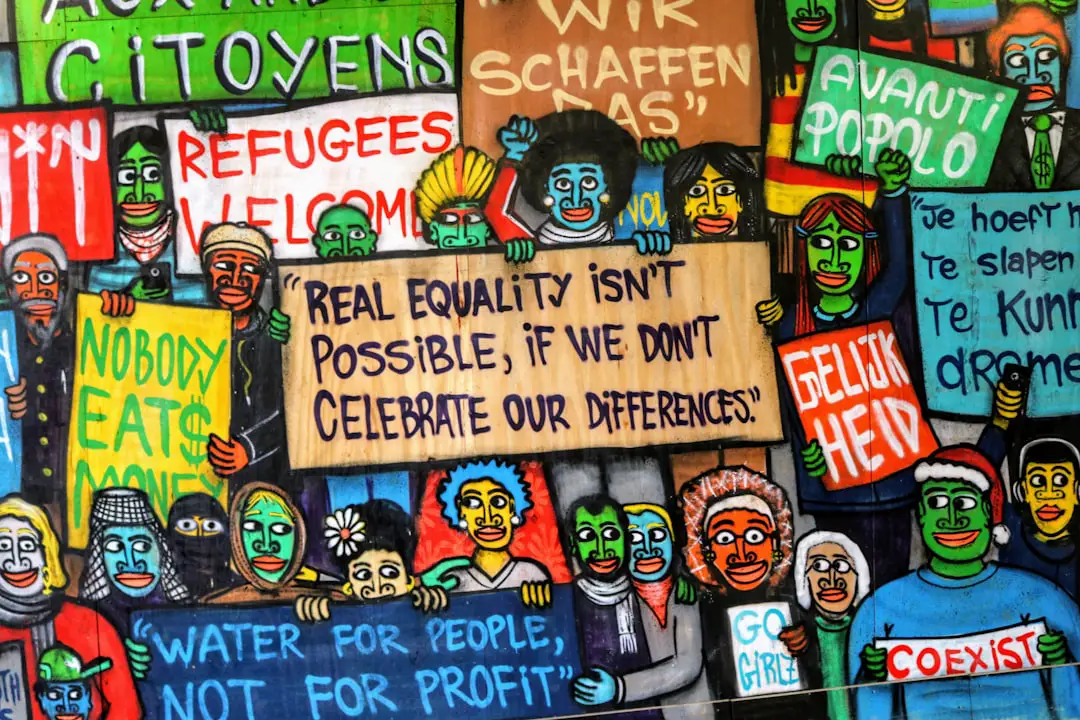In the realm of travel and tourism, accommodation options play a pivotal role in shaping the overall experience of a journey. From luxurious hotels that offer a plethora of amenities to budget-friendly motels that provide essential services, the choices available cater to a wide array of preferences and needs. As travelers embark on their adventures, understanding the distinctions between various types of accommodations becomes crucial.
This article delves into the characteristics, differences, and historical contexts of hotels and motels, providing insights that can guide travelers in making informed decisions about where to stay. The accommodation landscape is diverse, encompassing everything from hostels and bed-and-breakfasts to vacation rentals and resorts. However, hotels and motels remain two of the most common options for travelers.
Each type has its unique features, catering to different demographics and travel purposes. By examining the definitions, characteristics, and historical evolution of these two accommodation types, we can better appreciate their roles in the hospitality industry and how they meet the varying needs of guests.
Key Takeaways
- Hotels and motels are two common accommodation options for travelers
- A hotel is a larger establishment with more amenities and services, while a motel is typically smaller and more basic
- Hotels are often located in urban areas with easy accessibility, while motels are commonly found along highways and in rural areas
- The target audience for hotels is usually business and leisure travelers, while motels cater to budget-conscious travelers and road trippers
- Considerations for choosing between a hotel and motel include location, amenities, pricing, and environmental impact
Definition and Characteristics of a Hotel
Comprehensive Amenities
One of the defining characteristics of hotels is their comprehensive range of amenities, which often include room service, on-site restaurants, fitness centers, swimming pools, and conference facilities. Many hotels also offer concierge services to assist guests with reservations, transportation, and local attractions.
Luxurious Experience
Hotels are generally designed to provide a more luxurious experience compared to motels. They often feature well-decorated rooms with high-quality furnishings, premium bedding, and en-suite bathrooms. The ambiance in hotels is usually more formal and sophisticated, catering to both leisure and business travelers.
Personalized Service
Additionally, hotels often have a higher staff-to-guest ratio, ensuring personalized service and attention to detail. This level of service is particularly appealing to those seeking comfort and convenience during their stay.
Definition and Characteristics of a Motel

In contrast to hotels, motels are designed primarily for motorists and are typically located along highways or major roads. The term “motel” is derived from “motor hotel,” reflecting their original purpose of providing convenient lodging for travelers on long road trips. Motels are characterized by their straightforward design, often featuring exterior corridors that allow guests to park directly outside their rooms.
This layout is not only practical but also enhances accessibility for those traveling with vehicles. Motels generally offer fewer amenities than hotels, focusing instead on providing essential services at an affordable price. Common features include basic room furnishings, free parking, and sometimes complimentary breakfast.
While some motels may have swimming pools or vending machines, they typically lack the extensive facilities found in hotels. The atmosphere in motels is often more casual and relaxed, appealing to budget-conscious travelers or those seeking a quick overnight stay without the frills associated with higher-end accommodations.
Differences in Size and Amenities
| Property | Size (sq ft) | Amenities |
|---|---|---|
| Apartment A | 1000 | Swimming pool, gym, parking |
| Apartment B | 1200 | Tennis court, playground, parking |
| House A | 2000 | Garden, garage, swimming pool |
| House B | 2500 | Backyard, garage, home theater |
One of the most noticeable differences between hotels and motels lies in their size and the range of amenities they offer. Hotels can vary widely in scale; some may have hundreds of rooms spread across multiple floors, while others may be intimate boutique establishments with only a handful of rooms. This variance allows hotels to cater to different market segments, from large conferences to romantic getaways.
The extensive amenities found in hotels often include full-service restaurants, bars, spas, fitness centers, and business facilities equipped with meeting rooms and technology support. Motels, on the other hand, tend to be smaller in scale and more limited in their offerings. Most motels feature a straightforward design with a focus on functionality rather than luxury.
The typical motel room includes basic furnishings such as a bed, a small table or desk, and a bathroom.
This difference in size and amenities reflects the distinct target markets that each type of accommodation serves.
Location and Accessibility
Location plays a crucial role in determining the suitability of hotels and motels for different types of travelers. Hotels are often strategically situated in urban centers or tourist hotspots, making them ideal for those looking to explore cultural attractions, dining options, and entertainment venues. For instance, a hotel located near a major city center may provide easy access to museums, theaters, shopping districts, and public transportation systems.
This accessibility is particularly appealing to business travelers who require proximity to corporate offices or conference venues. Motels are typically found along highways or major roads, catering primarily to road-trippers or those seeking convenient overnight stays during long journeys. Their locations are often chosen for easy access to major thoroughfares rather than urban attractions.
For example, a motel situated near an interstate highway may serve as a convenient stop for families traveling across the country or for truck drivers needing rest during long hauls. While motels may lack the cultural vibrancy of urban hotels, their strategic locations make them practical choices for travelers prioritizing convenience over luxury.
Target Audience and Pricing

Hotels: Catering to a Diverse Clientele
Hotels generally attract a diverse clientele that includes business travelers, vacationers seeking luxury experiences, and families looking for comfortable accommodations with ample amenities. The pricing for hotels can range from budget-friendly options to high-end luxury suites, allowing them to cater to various income levels and preferences.
Motels: Affordable Options for Budget-Conscious Travelers
Motels primarily appeal to budget-conscious travelers who prioritize affordability over luxury. Their pricing structure is typically lower than that of hotels, making them an attractive option for individuals or families on tight budgets or those simply needing a place to rest during long journeys. Motels often offer competitive rates for basic accommodations without the added costs associated with extensive amenities or services found in hotels.
Affordability Makes Motels a Popular Choice
This focus on affordability makes motels particularly popular among road-trippers, backpackers, and those seeking no-frills lodging options.
Services and Facilities Offered
The services and facilities offered by hotels and motels further highlight their differences in catering to guest needs. Hotels often provide a wide array of services designed to enhance the guest experience. These may include 24-hour front desk service, concierge assistance for booking tours or dining reservations, room service for meals delivered directly to guest rooms, laundry services, and recreational facilities such as spas or fitness centers.
Many hotels also offer loyalty programs that reward frequent guests with discounts or complimentary services. In contrast, motels typically focus on providing essential services without the extensive range found in hotels. Most motels offer basic amenities such as free parking and Wi-Fi but may not have on-site dining options or concierge services.
Some motels may provide complimentary breakfast items like pastries or coffee but do not usually have full-service restaurants. The simplicity of motel offerings aligns with their target audience’s expectations for affordable lodging without unnecessary frills.
Historical Evolution of Hotels and Motels
The historical evolution of hotels and motels reflects broader changes in travel patterns and societal needs over time. Hotels have roots that trace back centuries; ancient civilizations established inns along trade routes to accommodate travelers seeking rest during long journeys. The modern hotel industry began to take shape in the 18th century with the rise of grand hotels in Europe that catered to affluent travelers seeking luxury experiences.
Motels emerged much later in response to the rise of automobile travel in the mid-20th century. As car ownership became more widespread after World War II, the need for convenient roadside accommodations grew significantly. The first motels were designed specifically for motorists, offering easy access from highways and parking directly outside guest rooms.
This innovation transformed the landscape of travel accommodation by providing affordable options for families embarking on road trips across America.
Cultural and Societal Perceptions
Cultural perceptions surrounding hotels and motels can vary widely based on societal norms and expectations regarding travel accommodations.
This perception is reinforced by marketing strategies that emphasize opulence and exclusivity.
Conversely, motels may carry a different cultural connotation; they are frequently viewed as budget-friendly options that prioritize functionality over luxury. While many travelers appreciate the affordability of motels, there can be lingering stereotypes about cleanliness or safety associated with some establishments. However, it is essential to recognize that many modern motels have made significant improvements in quality and service standards to meet evolving traveler expectations.
Environmental Impact and Sustainability
As awareness of environmental issues grows globally, both hotels and motels are increasingly focusing on sustainability practices within their operations. Hotels often implement comprehensive sustainability initiatives aimed at reducing their carbon footprint through energy-efficient systems, water conservation measures, waste reduction programs, and sourcing local products for their restaurants. Many upscale hotels have adopted green certifications that highlight their commitment to environmentally friendly practices.
Motels are also beginning to embrace sustainability efforts but may face unique challenges due to their budget-oriented nature. Some motels have started implementing energy-efficient lighting or water-saving fixtures while promoting recycling programs for guests. However, the extent of these initiatives can vary widely among different motel chains or independent operators.
As consumer demand for sustainable travel options continues to rise, both hotels and motels will likely need to adapt their practices accordingly.
Conclusion and Considerations for Choosing between a Hotel and Motel
When deciding between a hotel and a motel for accommodation during travel, several factors come into play that can influence the choice based on individual preferences and needs. Travelers should consider aspects such as budget constraints, desired amenities, location preferences, and the overall experience they seek from their stay. Understanding the distinctions between these two types of accommodations can empower travelers to make informed decisions that align with their specific requirements.
Ultimately, whether one opts for the luxurious offerings of a hotel or the straightforward convenience of a motel will depend on personal priorities during travel. Each option has its unique advantages that cater to different types of travelers—those seeking indulgence versus those prioritizing practicality—making it essential for individuals to assess what matters most during their journey.
If you’re planning a trip and need to stay overnight, it’s important to understand the difference between a hotel and a motel. Hotels typically offer more amenities and services, while motels are usually more budget-friendly and have rooms that open directly to the outside. For more information on finding the best accommodations for your travels, check out this article on the best travel scooter to help you get around easily during your trip.
FAQs
What is the difference between a hotel and a motel?
The main difference between a hotel and a motel is their layout and design. Hotels typically have multiple floors and interior hallways, while motels have rooms that open directly to the outside.
What amenities can be found in a hotel?
Hotels often offer a wide range of amenities such as restaurants, bars, fitness centers, swimming pools, conference rooms, and room service. They may also have a higher level of service and luxury compared to motels.
What amenities can be found in a motel?
Motels usually offer more basic amenities such as parking directly outside the room, free Wi-Fi, and sometimes a small breakfast area. They are generally more budget-friendly compared to hotels.
What is the typical size of a hotel?
Hotels can vary in size from small boutique hotels with a few dozen rooms to large resorts with hundreds of rooms and extensive facilities.
What is the typical size of a motel?
Motels are typically smaller in size compared to hotels, often with fewer than 100 rooms. They are usually designed for travelers looking for a simple and affordable place to stay for a short period of time.
Can hotels and motels be found in the same location?
Yes, hotels and motels can be found in the same location, especially in areas with high tourist traffic. This allows travelers with different budget preferences to choose accommodations that suit their needs.
